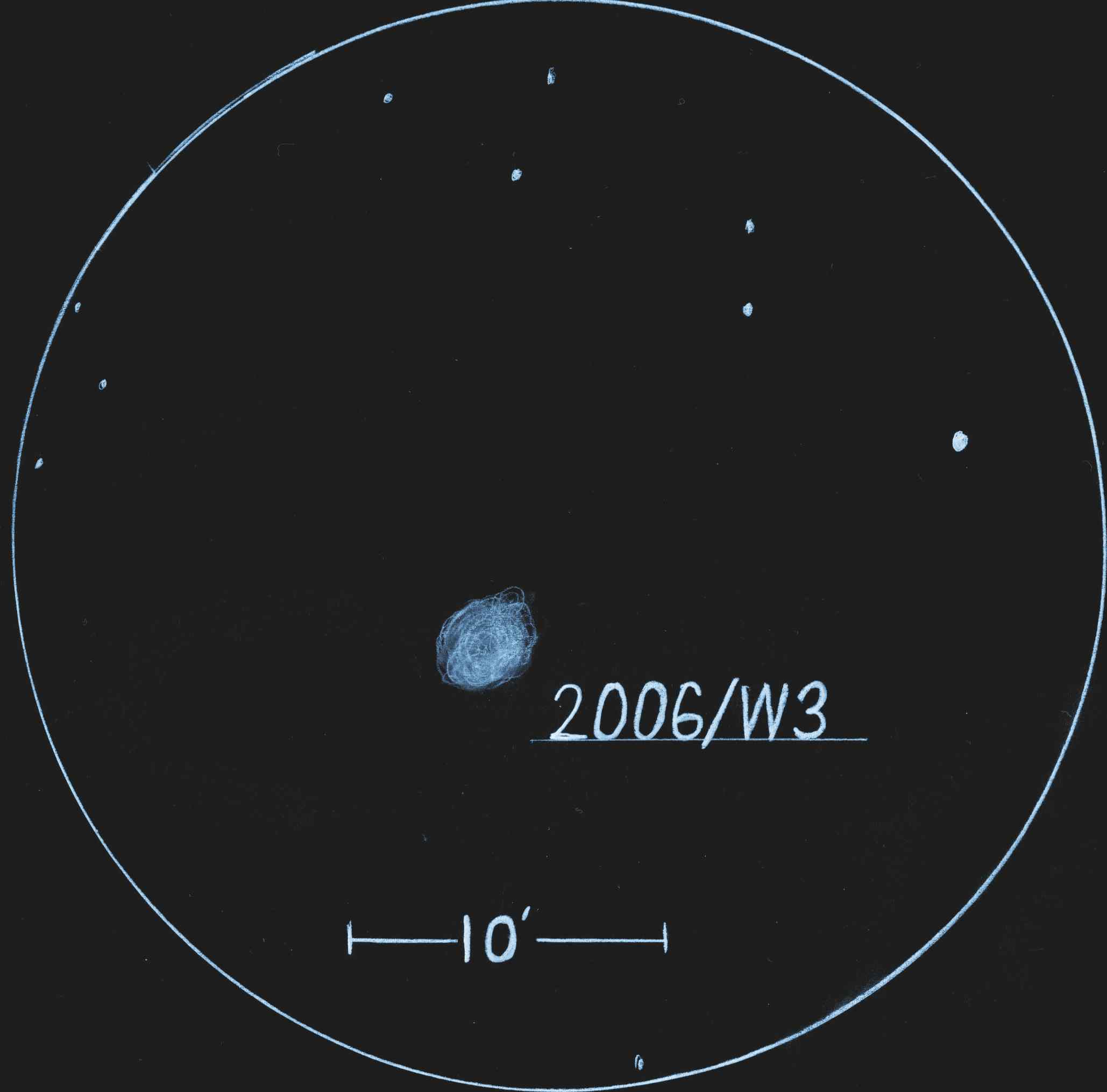Copyright 2008 Starry Mirror



The
TM
Astronomy From West Virginia
OBSERVING COMET CHRISTENSEN, 2006/W3, IN THE FALL OF 2008
BRIDGEPORT, WV (S-M) - Another distant comet has been visible this Fall 2008 as Comet Christensen, 2006/W3, has been seen high in the northern sky during the cool nights.
We first spotted the comet on October 22, when it was moving into the northern part of Cepheus. The comet was dim, at about magnitude 11, and could just barely be detected in our 10" reflector as a faint, fuzzy patch of light.
The next time we saw the comet, it was the evening of November 29, when it had moved into southern Cepheus. After starting on the famous variable star Delta Cephei, and admiring its orange and blue components, we followed the chains of stars a few degrees west until we were upon the comet. The comet's appearance had improved quite a bit in the month prior, as it was then about magnitude 10, and was clearly visible as a round patch of light about five arc minutes in diameter. We even thought that the comet appeared to have a hazy elongation around one side of the coma, as if a tail was going to form, but it is highly unlikely that any tail will ever be visible on Comet Christensen, at least through our telescopes.
Comet Christensen, 2006/W3, is a very distant comet. It is named for E.J. Christensen of the Catalina Sky Survey, and care must be taken not to confuse it with other comets of the same name. The comet was discovered in November 2006, when it was between the orbits of Jupiter and Saturn. It won't reach its closest approach to the Sun until June of 2009, and even then it will still be more than three times the Earth's distance from the Sun. Although this means that the comet will never become bright enough to be seen with the naked eye, it should be visible in large binoculars this coming Summer. Also, while a comet which comes in close to the Sun may shine at its brightest for a few weeks or months during the closest approach, a distant comet like Christensen evolves in brightness much more slowly, and will be visible in medium sized telescopes well into 2010.
In many ways, Comet Christensen seems similar to the other bright comet we've been following in the northern sky, Comet Broughton, 2006/OF2. Both are distant comets which will be visible for years, and which are in orbits which likely will never return them to the Solar System. - GW

A depiction of the comet on the evening of November 29, 2008, as seen in a 10" reflector at medium power. The comet was passing through a rather dark patch of sky in southern Cepheus.